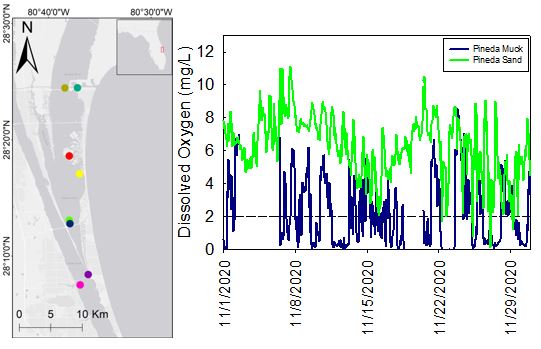
Awards 2021
Best in Show Awards
CROPP (Cubesat Research of Plants Platform)
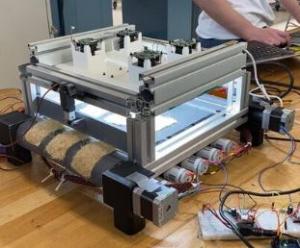
Team Lead: B. Flanagan
Team Member(s): H. Augér, N. Choplin, B. Flanagan, A. Girard, B. Koenitzer, J. Liberman, D. Madden, T. Priller, R. Sousa, T. Stephenson
Faculty Advisor(s): Dr. Kimberly Demoret
NASA’s Kennedy Space Center (KSC) and Florida Tech have partnered on a senior design project focused on using CubeSat technology to research plant growth in space. The project supports NASA’s goals of developing long-term food resources for astronauts by expanding current research and testing capabilities on the sustainable growth of plants in space. This project, the CubeSat Research of Plants Platform (CROPP), focuses on research on how plant pathogens and different treatment methods might impact the growth of plants in the low gravity and high radiation environment outside of Earth’s atmosphere. Since pathogens are a risk to the health of astronauts, a CubeSat science mission provides an isolated environment that could not be achieved safely onboard the ISS. Radish microgreens have been selected as the plant of choice for the CROPP mission due to their nutritional heartiness, small stature, and quick harvest time. White Rust has been chosen as the pathogen that will be introduced to the radishes, for the distinct visual indicators they present when infecting plants. Several fungicides will be applied within the finalized CubeSat, investigating their effectiveness within a space environment and their impact on the plant’s overall growth.
Because of the high cost and complexity of CubeSat projects, the team has developed CROPP as a multi-year project with three primary systems: CubeSat payload, CubeSat bus, and the ground station. This year, the team worked with NASA plant research scientists to develop a payload concept and requirements that could fill existing gaps in NASA’s research capability, conducted experiments on microgreen growth, then began design and fabrication of the payload prototype. The payload will house the plant experiments, collect data, and send these results back to the ground station for analysis. The ground station was also fabricated because it provides a low-cost way for the team to gain early experience with satellite communication. The team worked with Professor Ken Ernandes to build a system that can collect data on other CubeSats currently in orbit. The team also developed the system architecture for the CubeSat bus, and completed an early conceptual design of the major subsystems.
Future teams will advance the CROPP project by continuing the development of the CubeSat bus, improving the current Ground Station and CubeSat payload systems, and securing the funding to complete a launch-ready CubeSat. NASA has encouraged CROPP to seek additional funding from the University Nanosat Program (UNP), and this team has prepared a draft proposal to be submitted in Fall 2021 in response to the UNP NS-9 Request for Proposal (RFP). Once CROPP has been further developed, a future Florida Tech team will apply for a ride to space through NASA’s CubeSat Launch Initiative.
Mangrove Tree Crab Climbing Biomechanics
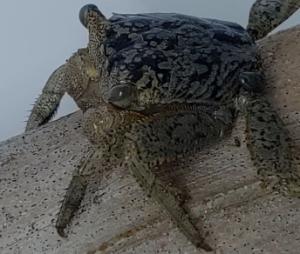
Team Lead: Brianna Forté
Faculty Advisor(s): Dr. Ralph G. Turingan
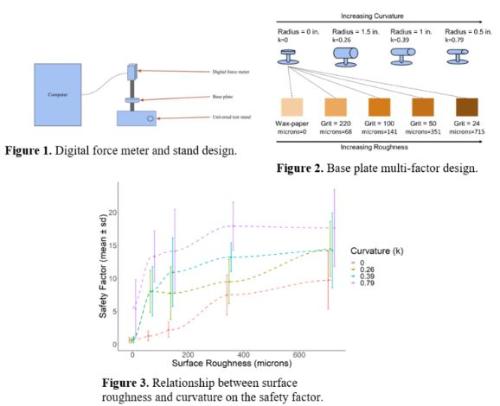
3D Printed Prosthetic Arm
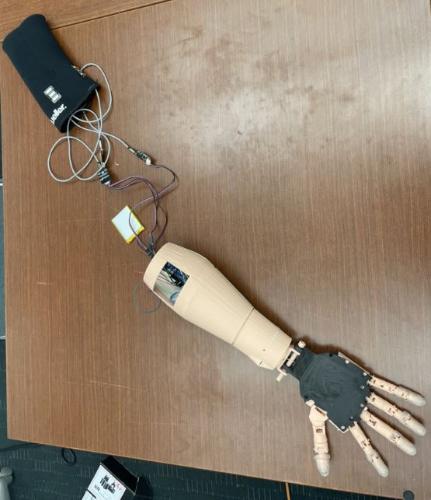
Team Lead: Rachel Clary
Team Members: Pedro Bautista, HaiShuo Guan, Tadiwanashe Mkaratigwa, Dallas Nash
Faculty Advisor(s): Dr. Ted A. Conway
Problem Statement: Upper limb amputations severely impede an individual’s ability to perform simple daily tasks. In the U.S., there are over 100,000 new amputations each year, with transradial amputations accounting for 65% of all upper limb amputations. Unfortunately, upper limb prosthetics in the current market have low usage rates due to their high cost, heavy weight, and poor aesthetics. Therefore, a low-cost, customizable 3D printed prosthetic arm has been developed to accommodate for individuals with transradial limb differences.
Major Challenges: Functionality, speed of movements, and cost of the prosthetic need to be optimized. A design, without novel technological advancements, is only ever able to address two of these three components to ensure economic success of a medical device. The prosthetic must be made using a fast and cheap manufacturing method to sell for a lower price compared to competitors but must also produce forces and motions similar to that of the natural arm. Additionally, it needs to be aesthetically pleasing, maintain functioning electronic and software components, and ensure safety without major risk of injury to the user.
Solution Methods: By using additive manufacturing (3D printing), functional components of the device were produced through Blender at a low cost and fast speed. The device uses electromyography (EMG) by which myoelectric signals sent from a patient’s residual limb will be used to control the prosthetic’s movements for improved functionality. A system of worm gear motors with an Arduino controller is used to produce a sufficient force of 50N for gripping and moving objects. Force, temperature, and battery sensors relay information acting on the prosthetic back to the user in a feedback loop. Finally, the design enables adjustable socket compression straps, skin colored filament, adjustable weight containers which allows users to control the arm’s active weight and aesthetic appeal.
Data Analysis: The data analysis techniques used include finite element analysis (FEA) to determine force distribution of components, EMG signal training to determine limitations of the user and specific grip movements, and mathematical modeling of speed, force, and angles of prosthetic motion. Chemical, electrical, mechanical and software failure analyses were performed to determine integrity of the design. Moreover, weight calculations were conducted to ensure an appropriate and lightweight prosthetic design.
Conclusion and Future Work: The special features of the transradial prosthetic arm meet the desired design deliverables while enhancing the user’s experiences with cost effective myoelectric arms. For future recommendations, an app would be a valuable implementation to socially connect prosthetic users. Furthermore, game-based EMG training could be used to enhance user’s control ability, the option to set click-based grip settings to minimize constant pressure on residual limb muscles, and finally, feedback to actively monitor health would be a precious inclusion for users.
Production of High Purity Biodiesel Using Non-Edible Jatropha Catalyst and Oil
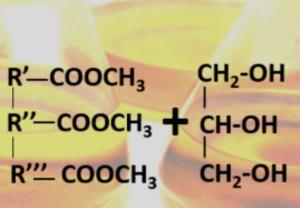
Team Lead: Luc Larson
Team Members: Jessica Peterson, Ethan Kennedy
Faculty Advisor(s): Dr. Johnathan E. Whitlow
As the search for innovative energy solutions continue, it is desired to produce a cleaner burning, sustainable fuel source that can be produced in large quantities and remain economically feasible. Jatropha Curcas (JC) oil can be grown in harsh climates and offers a non-edible feedstock alternative to the traditionally vegetable oil-based biodiesel sources. In addition to using JC oil as the feedstock oil, a novel catalyst derived from the de-oiled seed cake of JC seeds is used as the catalyst for the pretreatment section of the plant. This catalyst replaces the traditional sulfuric acid catalyst. Its non-corrosive, high performance, and reusable nature are among the several benefits of this novel catalyst.
The overall scope of this project was the design, simulation, and economic analysis of an industrial scale biodiesel production plant. Aspen Plus V11 was the main simulation software used in this project. The main challenges arose when attempting to model the solid catalysts in the simulation because Aspen can only reliably predict the behavior of liquid and vapor phase components. Using individual component flowrates and process vessel sizing parameters taken from the simulation, a thorough economic analysis was completed in Excel. Capital, operating, and other prominent costs were calculated using the Turton costing methodology. Based on the analysis, the proposed plant hits the break even point after 5 years and will make over $10 million dollars of annual profit after 10 years. Therefore, this process modelled to produce high-purity biodiesel is not only environmentally friendly, but extremely profitable.
Melbourne Civic Engagement Center
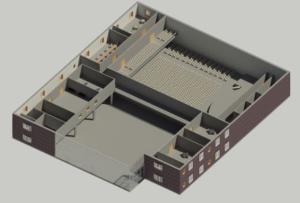
Team Lead: Luke Palmisano
Team Members: Thomas Bowser, Rodrigo Meirelles, Lola Sanchez, Samuel Leighton, Thierry LaFortune
Faculty Advisor(s): Dr. Troy Nguyen
This project designed a new Civic Engagement Center for our client, the city of Melbourne, FL. The site chosen for construction is 635 E Hibiscus Blvd, near the center of downtown Melbourne. The building was designed to serve the residents of the city of Melbourne, as well as bring in additional revenue streams for the city. The building includes two offices, five multipurpose rooms, a ballroom, and an auditorium. The city of Melbourne and its’ residents can utilize this building for a number of purposes as well as rent it to private companies for event-hosting. In addition to the building design, a parking lot design was also created for the convenience of the building occupants. The design of the building will also qualify for LEEDS Silver Certification through the incorporation of sustainable features.
The design team of this project included two Construction Managers and four Civil Engineers. One of the major challenges the team faced was the collaboration between the two disciplines. The Civil Engineers were tasked with the physical building design while the Construction Managers used those designs to assemble Cost Estimates, Construction Duration Estimates, Safety Plans, and more. It became clear early in the design process that the two disciplines would have to communicate clearly and efficiently in order to complete the project. To solve this, weekly team meetings were scheduled in order to ensure the efforts of both disciplines were coordinated and consistent. This made the design process go much more smoothly. Another challenge the team faced was with LEEDS Certification. Utilizing sustainable features in a building is extremely important to keep our environment as healthy as possible. Making a building as “Green” as possible is no easy task, so the design team used the LEEDS guideline from very early-on in the design process. The LEEDS guidelines and point system were examined, with sustainable features assigned to be incorporated by each Engineer/Construction Manager. Through this, a certification level of “Silver” was achieved.
The final design of this building includes numerous products: building elevations modeled in
Revit, parking lot plan views, GANTT Chart Schedules, Structural plans, and more. Together, all of those sources contribute to a sustainable building design to serve the residents of Melbourne, FL.
Customizable Analysis and Visualization Tool for COVID Cases
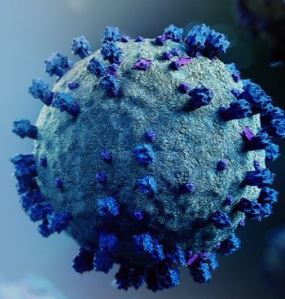
Team Lead: Calvin Burns
Team Members: Sam Hartle, Stian Olsen, Nicole Wright
Faculty Advisor(s): Dr. K. Philip Chan
Project Description: During the COVID-19 pandemic, our advisor noticed the lack of interactive and customizable COVID-19 statistics websites/dashboards. The majority of dashboards have predefined datasets, graphs, and maps. No dashboards allowed the user to perform their own statistical analysis, create their own plots, or upload additional data to use in conjunction with the site’s existing data. The goal for this project was to develop an interactive and customizable COVID-19 dashboard that allows users to perform custom analysis, create custom visualizations, and upload their own datasets.
Features: Users can first upload and initially view COVID-related CSV dataset(s) in table form. From there, users can select specific datasets based on if they are classified as private, curated, or shared and search for variables to visualize from within these datasets. The main feature of the system allows users to choose a visualization method and build different types of visualizations from variables in their chosen dataset. These methods include trends over time, proportion among categories, relationships between factors and situations, and distributions over FL counties. Furthermore, each visualization method has a customizable time range based off of the date range of the chosen dataset. Lastly, users can view a list of their created plots and select specific ones to view.
Evaluation/Challenges/Future Work: The challenges we faced throughout the project were largely design-related. We needed to figure out a way to quickly process, store, and manipulate the large amount of data associated with COVID-19 that would be used in our system. We made use of an Amazon S3 Storage Server to store data and serialized each dataset to a pickled object. This approach saved a good amount of space and resulted in faster processing speeds. In terms of future work, we foresee users being able to do different operations on variables in a dataset. For example, a user may want to calculate the positivity rate per 1,000 people in a Florida county. Furthermore, the scope of the project could eventually be expanded to include the entire United States instead of just the state of Florida.
.
Halbach Array Charger
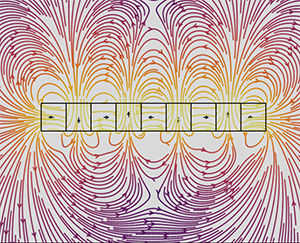
Team Lead: David Sebesta
Team Members: Sean Catron, William Gay, Abdallah Al Kindi, Abigail Tunnell, Ariel Santiago, Bin Huang, David Perry, Lucas Harbour, Omar Al Sinani
Faculty Advisor(s): Dr. Ed Caraway
Electric vehicles are an important step in lowering carbon emissions and using renewable energy. The process to charge electric vehicles is becoming outdated and needs to be improved. Wireless charging with directed near field antennas is the future of charging electric vehicles. The Halbach Array was invented by Klaus Halbach which finds that by placing magnets rotated with 90° turns, the magnetic field generated above the array is strong while the magnetic field below the array is close to zero. Using other concepts like Maxwell’s equations and antenna theory, our team is trying to show that by using electromagnetic solenoids, a prototype for a Halbach Antenna Array can be created.
Theoretically, our team needed to first simulate the Halbach Antenna Array. Using MagPyLib, nine cubes were placed to act as electric solenoids that produce magnetic fields in a Halbach Array orientation. The simulation generated field lines that are strengthened above the array and weakened below the array. This result indicated that this concept needed to be explored experimentally.
The first step was to design a bobbin with SolidWorks Modeling that can be wrapped with copper wire to create a solenoid to generate a magnetic field. A compact bobbin was 3D printed and copper wire was wrapped around 150 turns to generate an inductance of 1.3mH. 9 of these bobbins were hot glued together with 90° turns to create a transmitting Halbach Antenna Array. The antenna needed to operate at a resonant frequency. Based on the parallel connection of the 9 solenoids with inductance of 1.3mH, applying a 1µF capacitor in series with the circuit, and the resonant frequency formula , the resonant frequency was 13.2kHz. The circuit had a sinusoidal input with a voltage of less than 10V and LT1167CN8 amplifiers with a gain of 100 were used.
Two methods were used to measure the Halbach Antenna Array. The first method was to use a small probe coil. The small loop coil needed to be matched with the resonant frequency to accurately measure the generated field lines. By measuring the inductance of the coil, and using the resonant frequency formula, a 4µF capacitor was attached to the coil so it operated at 13.2kHz. The results showed that the field strength changes horizontally above and below the array that resembles the theoretical model. The results also showed that the strength of the field lines were similar above and below the array possibly due to the limited strength of the Antenna Array. The second method of measuring the transmitting antenna was with a matching receiving antenna. The fields measured with the matching antenna were found to be stronger when the coils were perfectly aligned creating a flux linkage than when the antennas were misaligned. This indicates that a successful prototype was created.
In summary, our team was taking the first step in improving the charging of electric vehicles. By demonstrating that a Halbach Antenna Array creates directed field lines over the array and minimized field lines below the array, a Halbach Antenna Array is a possible solution to wirelessly charge electric vehicles. The next steps to create a wireless antenna charger could be more research into circular arrays or more tests to determine the best phase to couple the antennas and maximize the power transferred. This is all to create a cleaner, safer, and more efficient future in electric vehicles.
Volume as Trend Indicator for Future Stock Prices
Faculty Advisor(s): Dr. Munnever Subasi
In highly volatile stocks, relatively large spikes in volume occurring in joint with relatively small price increases will indicate a further upward trend in stock price.
To be considered for analysis in this research, a stock must have a high beta value and the associated company must be of sound economic standing. Beta is a measure of volatility of an equity with respect to the entire market. In this study, stocks with beta ratings greater than 1.5 are considered. This greatens the chance of large price and volume fluctuations in a short time period. The criterion of sound economic standing limits the possibility that a stock will deviate from anticipated trends due to income loss or bankruptcy. Only equities with MorningStar ratings of 2 stars or more are considered for this study.
The identification of a newly forming trend is accomplished with analysis of the recent volume and price history of the stock in question. Let f (t) be the volume function with respect to time. Let t represent the initial position, b represent the step size, and n represent the number of time stamps. Such that f (t + nb) corresponds to the volume at time t + nb. When f (t + nb) - f (t +(n-1)b) > 0 , let f (t + nb) - f (t +(n-1)b) = e where e is the change in volume between increasing time stamps. We want e >> average change volume. This will indicate a spike in volume..
The results of this study were very successful with 11 of the 14 stocks analyzed meeting the trend indication criteria at least once. All 11 stocks increased in price 30 minutes after this event occurred. On average, the greatest price increases occurred 25 and 35 minutes after an event, increasing by 0.909% and 0.913%, respectively. All analysis was done through Microsoft Excel. Future work beneficial to this project would include additional stock restrictions to determine if sector or market capitalization would have an impact on trend occurrence and magnitude of price growth.
U.S Navy Cone Rotation and Translation
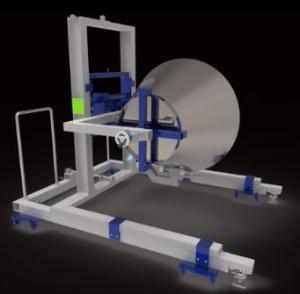
Team Members: Kevben Belastegui, Cody Clemons, Zachary Deese, Jordan Epstein, Casey Horton, Ryan Schaeffer, Lauren Tybor
Faculty Advisor(s): Deep Patel
The Cone Rotation and Translation Fixture is a project sponsored by Lockheed Martin and the United States Navy to create a device to lift and maneuver a 300-lb pound cone to aid in its inspection, internal build-up, and installation. This fixture is required to perform the following movements:
· Lift the cone (positioned vertically with the large diameter facing down before interfacing with the cone) to a height of 48’’ inches off the ground.
· Raise/lower to installation height (center at 48” off ground)
· Rotate the lifted cone from the vertical orientation to a horizontal orientation
· Allow the cone to be rotated 360° about its vertical axis
· Raise/lower to installation height (center at 48” off ground)
· Allow for fine translation for installation alignment (X: +/-10”, Z: +/-10” and Y: -10” only)
· Move the fixture to the next work area
The key challenges of this project are that the fixture needs to be operated by only one or two users (depending on the specific step), yet the entire fixture cannot use any electrical systems and hydraulic systems are limited to those with self-contained hydraulic power.
The team chose to create a purely mechanical fixture, using hand-wheels, winches, and a crank attached to a threaded rod to achieve the various motions. The team crafted a purely mechanical fixture that performs the required movements as follows:
The final design consists of a rotating claw that bolts onto the small rim of the cone and an arm with rollers that holds one side of the cone, with both carried by an L-shaped arm that facilitates the 90° rotation. This L-arm is then held by a lifting section where the block holding the arms is moved horizontally through the use of a jack, and the whole section is then lifted by a winch-driven wire through the top of the frame. The entire frame itself then sits on a base that it is able to be slid forward on, with the base’s casters contacting the floor.
· Mounted winch lifts the slider, which carries the hanging systems, 48’’ with fine vertical translation
· Handwheel and gearbox on the back of the rod housing rotate the rod carrying the hanging systems 90°
· Claw which attaches by bolting through holes in the small end of the cone
· Handwheel and gearbox on the arm carrying the claw, which rotates the claw 360°
· X-Translation is handled by the base being two pieces separated by low friction plastic, with a threaded rod connecting the two and extending/retracting the higher systems through a crank
· Y-Translation is handled through a jack between the 90° rod housing and the wall of the slider, moving the housing and the systems it’s carrying along the pipes it sits on
· Casters attached to the bottom of the base, along with foot stops at the front end to lock the movement
Continuously Monitoring Bottom Water Dissolved Oxygen in the Indian River Lagoon
Team Lead: Tyler Provoncha
Faculty Advisor(s): Dr. Austin Fox
The Indian River Lagoon (IRL) experienced an increasing number of hypoxic and anoxic events in recent years. These events lead to fish kills and changes to nutrient cycling while promoting algae blooms. During these events, estuarine sediments can switch from a sink to a source of nutrients, especially sediments composed of fine-grained organic-rich material (known as “muck”). To understand the differences in dissolved oxygen (DO) concentrations between the sediment-water interface where most geochemical processes occur and in the water column where monitoring is traditionally done, and to evaluate differences in DO for areas with differing sediment types of muck and sand, a bottom water deployment housing for DO loggers was created. The housings had to account for sediment filling and prevention of biofouling and have been deployed throughout the IRL and continuously collect DO data. Data from each location were compared to each other for sediment type differences and to other sensors in the lagoon for water column comparisons. This project has set the framework for the collection of long term datasets to track the changes in bottom water DO and make comparisons between sand and muck’s tendency for hypoxia that can be applied to water quality and hydrodynamic modeling efforts.
The Potential for Biofuels as Energy in the Marine Shipping Industry
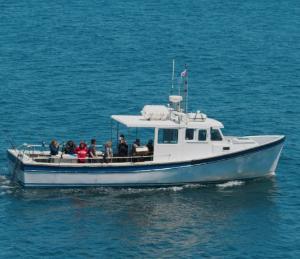
Team Lead: Jeffrey King
Faculty Advisor(s): Dr. K. Lindeman
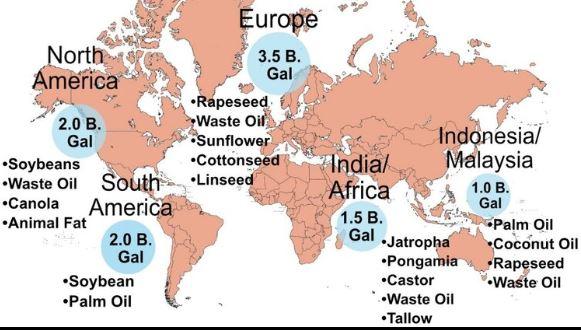
Are Moons Vital for Life? Determining the Effects of Exomoon Size and Distance on Exoplanets

Team Lead: Samantha Pryor
Faculty Advisor(s): Dr. Manasvi Lingam, Dr. Hamid Rassoul
Tidal modulations are considered vital for the evolution of complex terrestrial life. Planets such as Earth have nearly equal lunar and solar tidal forces, contributing to rich tidal modulations. This project seeks to constrain the effects of exomoon size and distance from the host planet, along with stellar size, to present reasonable conditions where equal lunar and solar tidal forces may exist. Identifying planets with potentially stable exomoon orbits with rich modulations will allow them to be marked for future biosignature investigations. The objectives of this project were to complete calculations to determine the constraints on planet-moon orbital distance and to create a model with dynamic inputs that can be changed for different systems. Future work may include applying this model to known systems. Additionally, this model may one day be used as a sort of screening tool to determine whether exoplanets might be astrobiologically relevant and warrant further investigations.

